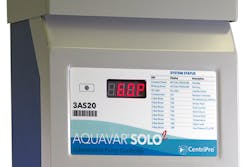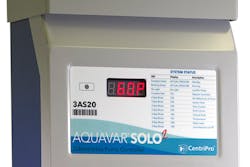10 tips for a successful variable frequency drive installation
Homeowners rely on a continuous flow of water to do daily household activities like watering the lawn, laundry, running the dishwasher and giving the kids a bath. Often, these activities take place at the same time, which can result in a drop in water pressure.
Contractors and plumbers can provide homeowners with the steady stream of water they expect by installing a variable frequency drive. The drive speeds up or slows down the pump depending on the household water requirements to deliver constant water pressure where and when it’s needed.
For a successful installation, follow these 10 tips.
- New or retrofitted system: Determine whether the variable frequency drive will be installed in a new water system or retrofitted for an existing water system. Variable frequency drives are available with a single-phase motor for a retrofit installation or a three-phase motor for a new conventional system.
- Proper pump size: Properly size the water pump before installing the variable frequency drive by measuring the well depth, demand and recovery rate. Some manufacturers have online selection tools for installers to aid in choosing the proper pump model.
- Shut down system: Make sure the system is shut down and all water has been drained from it before installing the drive. If there is water in the tank, the pressure reading will be inaccurate and can cause cycling issues.
- System’s psi: A new tank will typically be set at 38 pounds per square inch (psi). After the system is shut down, set the system’s psi. The rule of thumb is a 20-psi differential between the set pressure and the tank pressure. For example, if your set pressure is 60 psi, the tank should be set at 40 psi.
- Installation instructions: Check to see if the drive manufacturer provided installation instructions. If instructions were not provided, connect output power to the well. The wires will be color-coded, and the number of wires will depend on whether you are working with a single-phase motor or a three-phase motor. If a three-phase motor is being installed, make sure the motor is running in the proper counterclockwise rotation.
- Install the transducer. A transducer is the control for the drive and measures the pressure in the system. In a retrofit installation, you must first disconnect the pressure switch from the pipe/tank tee before installing the transducer.
- Current load: Adjust the motor overload setting to match the motor’s service factor amps. When the service factor amps are unknown, open the multiple fixtures/faucets at the same time and measure the output current with an amp meter to determine the current load.
- 60, 80 Hertz: Make sure the maximum frequency switch is set at either 60 or 80 Hertz (Hz). Use 60 Hz for match-pump motor combinations where the motor and pump horsepower are the same. For mismatched pump and motor combinations, where the motor horsepower is larger than the pump horsepower (typically two times larger), set the motor to 80 Hz.
- Test the system. When a drive is installed properly it will extend the equipment life, reduce energy consumption and lessen mechanical and electrical system stress.
- You must have a license: Only install the drive if you are a licensed professional. Installation is not a do-it-yourself project. If a variable frequency drive is not properly installed, the motor and pump will operate in an adverse condition, causing additional system damage or nuisance faults that can cause the system to be inoperable and leave homeowners with no water. Many contractors, dealers and installers will not honor the product warranty if a homeowner installed the variable frequency drive in a conventional water system.
Chris Preston is a residential water product manager with expertise in submersible and jet pumps and residential pumping systems. For more than 10 years, he has worked for Xylem Inc. and its Goulds Water Technology brand as a product design engineer and project manager on multiple global new product development projects. Preston holds a bachelor of science degree in mechanical engineering from Clarkson University.

